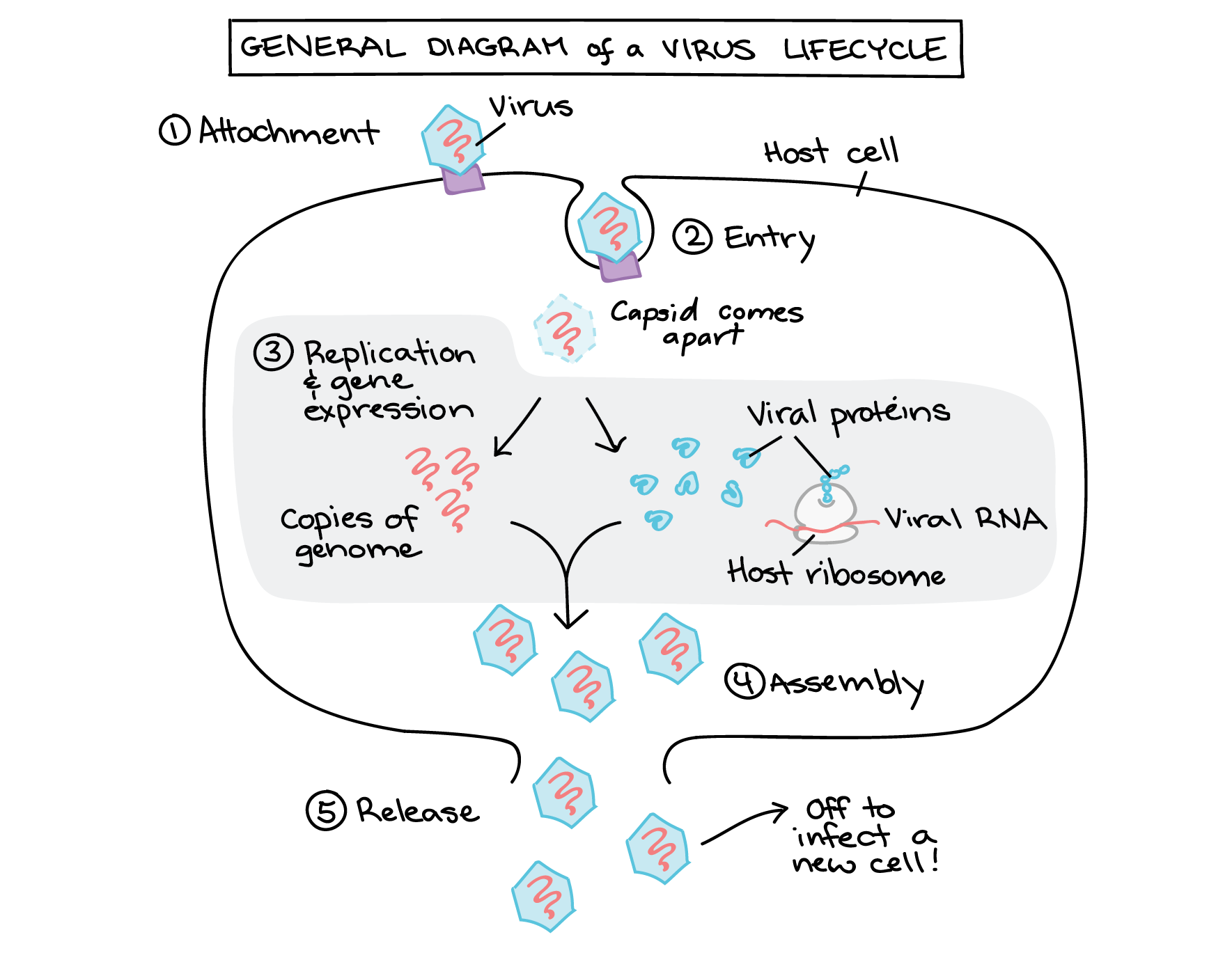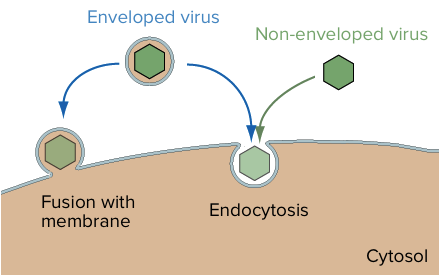WHAT IS VIRUS?
What a virus is. The structure of a virus and how it infects a cell.
Key points:
- A virus is an infectious particle that reproduces by "commandeering" a host cell and using its machinery to make more viruses.
- A virus is made up of a DNA or RNA genome inside a protein shell called a capsid. Some viruses have an internal or external membrane envelope.
- Viruses are very diverse. They come in different shapes and structures, have different kinds of genomes, and infect different hosts.
- Viruses reproduce by infecting their host cells and reprogramming them to become virus-making "factories."
Introduction
Scientists estimate that there are roughly viruses at any given moment. That’s a one with zeroes after it! If you were somehow able to wrangle up all of these viruses and line them end-to-end, your virus column would extend nearly light years into space. To put it another way, there are over ten million more viruses on Earth than there are stars in the entire universe.
Does that mean there are viruses just waiting to infect us? Actually, most of these viruses are actually found in oceans, where they attack bacteria and other microbes. It may seem odd that bacteria can get a virus, but scientists think that every kind of living organism is probably host to at least one virus!
What is a virus?
A virus is an tiny, infectious particle that can reproduce only by infecting a host cell. Viruses "commandeer" the host cell and use its resources to make more viruses, basically reprogramming it to become a virus factory. Because they can't reproduce by themselves (without a host), viruses are not consideredliving. Nor do viruses have cells: they're very small, much smaller than the cells of living things, and are basically just packages of nucleic acid and protein.
Still, viruses have some important features in common with cell-based life. For instance, they have nucleic acid genomes based on the same genetic code that's used in your cells (and the cells of all living creatures). Also, like cell-based life, viruses have genetic variation and can evolve. So, even though they don't meet the definition of life, viruses seem to be in a "questionable" zone. (Maybe viruses are actually undead, like zombies or vampires!)
How are viruses different from bacteria?
Even though they can both make us sick, bacteria and viruses are very different at the biological level. Bacteria are small and single-celled, but they are living organisms that do not depend on a host cell to reproduce. Because of these differences, bacterial and viral infections are treated very differently. For instance, antibiotics are only helpful against bacteria, not viruses.
Bacteria are also much bigger than viruses. The diameter of a typical virus is about - ( ). This is considerably smaller than a typical E. coli bacterium, which has a diameter of roughly ! Tens of millions of viruses could fit on the head of a pin.
The structure of a virus
There are a lot of different viruses in the world. So, viruses vary a ton in their sizes, shapes, and life cycles. If you're curious just how much, I recommend playing around with the ViralZone website. Click on a few virus names at random, and see what bizarre shapes and features you find!
Viruses do, however, have a few key features in common. These include:
- A protective protein shell, or capsid
- A nucleic acid genome made of DNA or RNA, tucked inside of the capsid
- A layer of membrane called the envelope (some but not all viruses)
Let's take a closer look at these features.
Virus capsids
The capsid, or protein shell, of a virus is made up of many protein molecules (not just one big, hollow one). The proteins join to make units called capsomers, which together make up the capsid. Capsid proteins are always encoded by the virus genome, meaning that it’s the virus (not the host cell) that provides instructions for making them.
Capsids come in many forms, but they often take one of the following shapes (or a variation of these shapes):
- Icosahedral – Icosahedral capsids have twenty faces, and are named after the twenty-sided shape called an icosahedron.
- Filamentous – Filamentous capsids are named after their linear, thin, thread-like appearance. They may also be called rod-shaped or helical.
- Head-tail –These capsids are kind of a hybrid between the filamentous and icosahedral shapes. They basically consist of an icosahedral head attached to a filamentous tail.
Virus envelopes
In addition to the capsid, some viruses also have a lipid membrane known as an envelope. Virus envelopes can be external, surrounding the entire capsid, or internal, found beneath the capsid.
Viruses with envelopes do not provide instructions for the envelope lipids. Instead, they "borrow" a patch from the host membranes on their way out of the cell. Envelopes do, however, contain proteins that are specified by the virus, which often help viral particles bind to host cells.
Although envelopes are common, especially among animal viruses, they are not found in every virus (i.e., are not a universal virus feature).
Virus genomes
All viruses have genetic material (a genome) made of nucleic acid. You, like all other cell-based life, use DNA as your genetic material. Viruses, on the other hand, may use either RNA or DNA, both of which are types of nucleic acid.
We often think of DNA as double-stranded and RNA as single-stranded, since that's typically the case in our own cells. However, viruses can have all possible combos of strandedness and nucleic acid type (double-stranded DNA, double-stranded RNA, single-stranded DNA, or single-stranded RNA). Viral genomes also come in various shapes, sizes, and varieties, though they are generally much smaller than the genomes of cellular organisms.
Notably, DNA and RNA viruses always use the same genetic code as living cells. If they didn't, they would have no way to reprogram their host cells!
What is a viral infection?
In everyday life, we tend to think of a viral infection as the nasty collection of symptoms we get when catch a virus, such as the flu or the chicken pox. But what's actually happening in your body when you have a virus?
At the microscopic scale, a viral infection means that many viruses are using your cells to make more copies of themselves. The viral lifecycle is the set of steps in which a virus recognizes and enters a host cell, "reprograms" the host by providing instructions in the form of viral DNA or RNA, and uses the host's resources to make more virus particles (the output of the viral "program").
For a typical virus, the lifecycle can be divided into five broad steps (though the details of these steps will be different for each virus):
- Attachment. The virus recognizes and binds to a host cell via a receptor molecule on the cell surface.
- Entry. The virus or its genetic material enters the cell.
- Genome replication and gene expression. The viral genome is copied and its genes are expressed to make viral proteins.
- Assembly. New viral particles are assembled from the genome copies and viral proteins.
- Release. Completed viral particles exit the cell and can infect other cells.
The diagram above shows how these steps might occur for a virus with a single-stranded RNA genome. You can see real examples of viral lifecycles in the articles on bacteriophages (bacteria-infecting viruses) and animal viruses.











